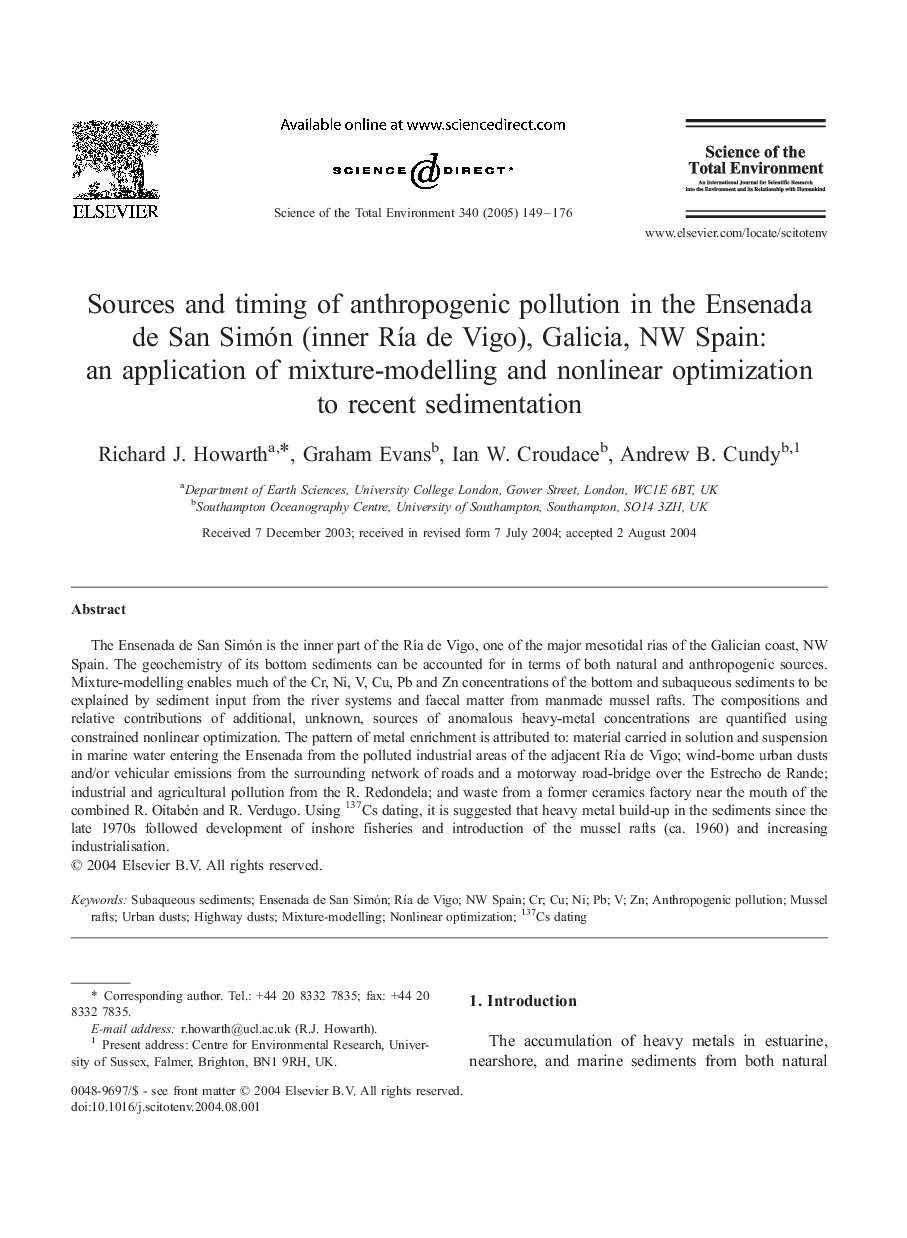| Article ID | Journal | Published Year | Pages | File Type |
|---|---|---|---|---|
| 10110918 | Science of The Total Environment | 2005 | 28 Pages |
Abstract
The Ensenada de San Simón is the inner part of the RÃa de Vigo, one of the major mesotidal rÃas of the Galician coast, NW Spain. The geochemistry of its bottom sediments can be accounted for in terms of both natural and anthropogenic sources. Mixture-modelling enables much of the Cr, Ni, V, Cu, Pb and Zn concentrations of the bottom and subaqueous sediments to be explained by sediment input from the river systems and faecal matter from manmade mussel rafts. The compositions and relative contributions of additional, unknown, sources of anomalous heavy-metal concentrations are quantified using constrained nonlinear optimization. The pattern of metal enrichment is attributed to: material carried in solution and suspension in marine water entering the Ensenada from the polluted industrial areas of the adjacent RÃa de Vigo; wind-borne urban dusts and/or vehicular emissions from the surrounding network of roads and a motorway road-bridge over the Estrecho de Rande; industrial and agricultural pollution from the R. Redondela; and waste from a former ceramics factory near the mouth of the combined R. Oitabén and R. Verdugo. Using 137Cs dating, it is suggested that heavy metal build-up in the sediments since the late 1970s followed development of inshore fisheries and introduction of the mussel rafts (ca. 1960) and increasing industrialisation.
Related Topics
Life Sciences
Environmental Science
Environmental Chemistry
Authors
Richard J. Howarth, Graham Evans, Ian W. Croudace, Andrew B. Cundy,
